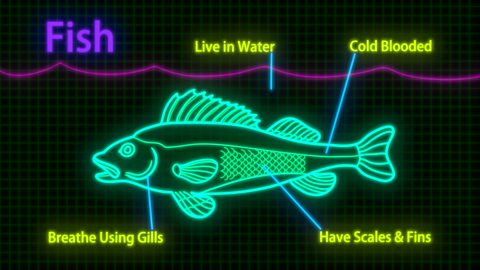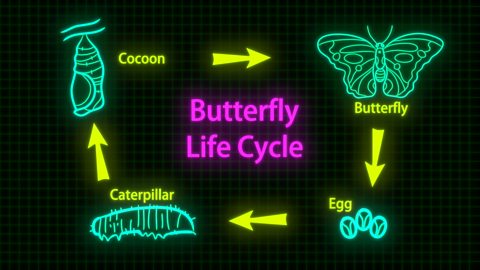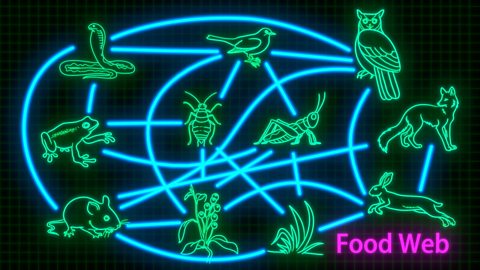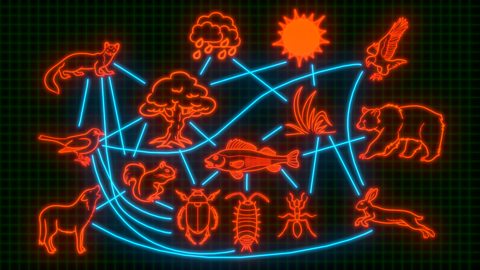[A salamander moves through the water in a cave.]
Do you notice anything unusual about this salamander? If you need a clue – in this cave there is usually no light.
This is a Texas Blind salamander; a type of salamander that has no eyes.
In the perpetual darkness of the caves where it lives, they are of no use – instead its other senses have become highly developed.
It can detect any movement in the water, it is completely aware of its surroundings, but all without eyes.
By losing its eyes and developing other senses, the Texas Blind salamander has adapted to its environment.
All over the planet, plants and animals adapt to the challenges of their own habitat. These distant fox cousins range from the far frozen north of the arctic to the scorching heat of the African desert, and everywhere in between – including your own street or back garden.
Yes, I'm talking about you.
In the distant past these foxes would all have shared a common ancestor, but now they are all adapted to their local habitat.
Can you spot how these animals differ from each other and why they have developed these differences?
The arctic fox has darker fur in the summer months, but when winter comes it has developed this pure white coat to help it blend into the snow while scavenging and hunting.
The fur is also thick and warm to cope with the extreme cold.
What a pair of ears. I should probably talk quietly. But in fact, although foxes do have very good hearing, that is not the only reason why these desert foxes have such huge ears.
It's also to keep cool. The desert fox's amazing ears help keep it cool by helping it to lose heat more quickly.
Also notice how the coat is much thinner than that of its arctic cousin. In the scorching desert, this fox has adapted to stay as cool as possible.
This is why the desert fox is also most active at night.
Nights in the desert can be very cool, and it's a time when many small desert animals are active…
A perfect time for hunting.
Nothing happening here…
But in nature things are not always what they seem.
Many animals have adapted to use camouflage, to hide and blend into their surroundings. Camouflage can be used as a form of defence, to help the animal hide from predators.
But it can also be used to help catch prey.
Probably the undisputed master of camouflage in the whole animal kingdom is the amazing cuttlefish. The cuttlefish can change both the colour and texture of its skin to match any environment, and these incredible transformations can all happen in the blink of an eye.
There are amazing examples of camouflage everywhere in nature, but how did these incredible creatures develop this impressive talent? Offspring are not identical to their parents. Even if it is a very small difference, there is variation from one generation to the next.
The better the camouflage of the offspring, the harder it is for them to be seen by predators or prey and the more likely it is that they will survive and reproduce.
Here is a simple example – these moths are from the same parents. Some are dark, some are light.
In the local environment, the darker moths will be more easily seen by predators and will be less likely to survive.
The lighter moths are more likely to reach adulthood and reproduce. When they do, the lighter moths will be more likely to produce more lighter coloured offspring, so after several generations the number of lighter moths will be higher than the darker moths.
This is how a species can adapt and develop over time to match their environment.
This is also true for animals that use camouflage to hunt.
The better they are at hiding, the more successful they will be at catching food and surviving, and the more offspring they will produce.
So through variation, we can see how over time a species can evolve and adapt to their environment.
Animals that are better adapted to their environment will be more successful in surviving and reproducing.
This is a key part of what we call natural selection. And natural selection is a key part of evolution – which is what we call it when species change and develop over time.
Video summary
Understanding adaptation is an important part of understanding natural selection and evolution.
Our journey through adaptations begins with the Texas blind salamander and how it is adapted to living in the dark.
We then move to the fox, and see three different kinds of fox.
Each fox is discussed in turn to illustrate how and why they are adapted to different habitats.
A seahorse and cuttlefish are used to demonstrate camouflage, which leads on to a discussion about how adaptation occurs with the example of a moth.
This clip is from the series Natural world of plants and wildlife.
Teacher Notes
Key Stage 2
Could be used to introduce ideas of adaptation, following on from the clip, pupils could be asked to describe conditions within a habitat such as the arctic of the desert.
They could then be given examples of organisms from these habitats and asked to discuss in groups how the animals are suited to those habitats, what do they have that helps them to survive? Applying what they have learnt.
Key Stage 3
Could be used to introduce or recap adaptation depending on ability then extended into more difficult organisms such as cacti, or more unusual examples such as the angler fish.
For higher ability, adaptations of microorganisms could be discussed.
This clip will be relevant for teaching science at Key Stage 2 and Key Stage 3 in England, Wales and Northern Ireland or Second/Third Level in Scotland.
Classification of organisms. video
A look at how fish, reptiles, mammals and birds are classified into groups based on shared characteristics.

The life cycles of different organisms. video
A look at the life cycles of a range of organisms including a mammal, an amphibian, an insect, a flowering plant, a bird and a human.

How plants and animals reproduce. video
An investigation into the many different ways animals and plants reproduce.

Food chains and food webs in animals. video
How energy is transferred through food chains and food webs via producers, primary and secondary consumers, predator, prey and decomposers.

The connections within ecosystems. video
An introduction to the concept of an ecosystem, exploring different types and looking at the connections between the living and non-living components of an ecosystem.

Human impact on the environment. video
A look at the impact of humans on ecosystems and the environment by focusing on the the penguins of Boulders Beach, Simons town, South Africa.
